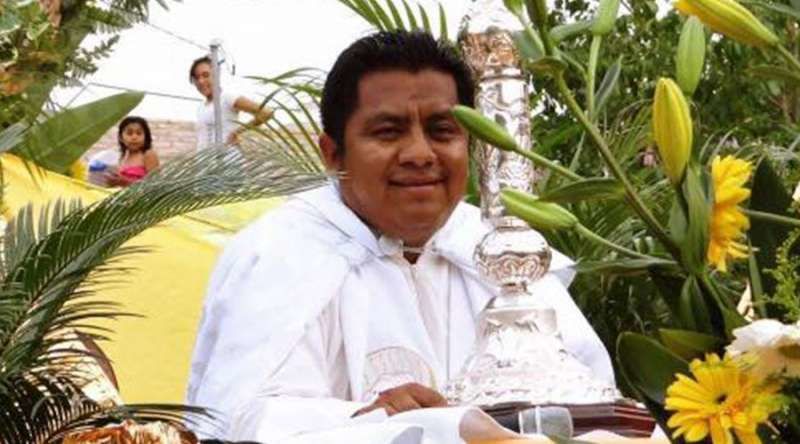The Bishop of Chilpancingo-Chilapa, Mexico denied that Fr. Germain Mu√±iz Garcia, who was murdered on a Mexican highway Feb. 5 along with Fr. Iván A√±orve Jaimes, had any connection to organized crime, as the Guerrero State Prosecutor's Office has recently claimed.
In a statement released Feb 7, Bishop Salvador Rangel Mendoza said that Fr. Mu√±iz Garcia “was never connected to any criminal gang.”
However, he said that the deceased priest “had knowledge, by the very nature of his pastoral work, of some gangs operating in that area, since being a pastor and a public person he had to travel through the area where those gangs were based in order to to serve the different communities.”
The Mexican bishop responded in his statement to the accusations lodged by the Guerrero State Prosecutor's Office, which claimed that the murdered priest belonged to “a criminal gang, by reason of the photographs and notes that circulated on the priest's social media,” posted months prior, where he is seen with a rifle alongside masked criminals.
According to the authorities, both priests were traveling to the town of Taxco de Alarcón to attend a party. According to the State Prosecutor's Office, “it is known that many people belonging to different criminal gangs went there from Guerrero State as well as Morelos and Mexico States.”
“At said party there was no municipal, state or federal security, since preventative security support for the party was not requested from any authority by the organizers.”
According to the Prosecutor's Office, a conflict during the party “triggered the armed attack” which ended the lives of the Mexican priests.
Four people who survived the attack were also traveling in the vehicle in which the priests died, including Fr. Germain's sister.
Bishop Rangel Mendoza noted there are serious inconsistencies with the Prosecutor's Office's version of what happened.
“The Prosecutor's statement seems strange to us, in that in the same place, Juliantla, in Guerrero, 'members of criminal gangs from Morelos, Mexico and Guerrero States would have gotten together,' without any reports of any confrontations between them or participants in the event. We also note the absence of municipal or state law enforcement, knowing the presence of the stated gangs,” the prelate stated.
The neighboring Archdiocese of Acapulco also expressed their criticism of the Prosecutor's Office in a statement.
“It seems strange to us that people belonging to different criminal gangs, carrying weapons, could have gotten along with each other at the dance, without any incident. This does not seem to be their ordinary conduct,” they said.
In addition, they pointed out, the four survivors of the attack maintained “that there was no conflict at where the dance was held.”
“These four survivors report that coming back to Taxco they passed the assailants' car which went after them, caught up with them, blocked their way and shot them,” the Archdiocese of Acapulco stated.
Regarding the photograph of the priest carrying a firearm alongside criminals, Bishop Rangel Mendoza told the press that although “it was extremely imprudent,” of him, and that he reprimanded the priest at the time, Fr. Mu√±iz Garcia “had to pass through the drug traffickers' territories,” and he had to “greet them, he had to dialogue with them, he had to do it, because he had to pass through their territory, how else was he going to get through?”
The bishop said the priests went to the party “to offer their music and see if they would let them sing a few songs.”
In his statement, the prelate asked that “the investigations be objective, truthful and adhering to the law and the truth of the facts,” and that if the Prosecutor's Office claims that the priest belonged to some criminal gang, “(I) urge them to specifically determine to which criminal gang he belonged to and not to limit themselves to making simple accusations.”
In addition, he demanded from the Guerrero State Prosecutor's Office “a complete and certified copy of the file on the investigation that supports the said statements, since as the Prosecutor has the obligation to determine what actually happened, supporting the findings with reliable and truthful evidence.”
This article was originally published by ACI Prensa. It has been translated and adapted by CNA.

